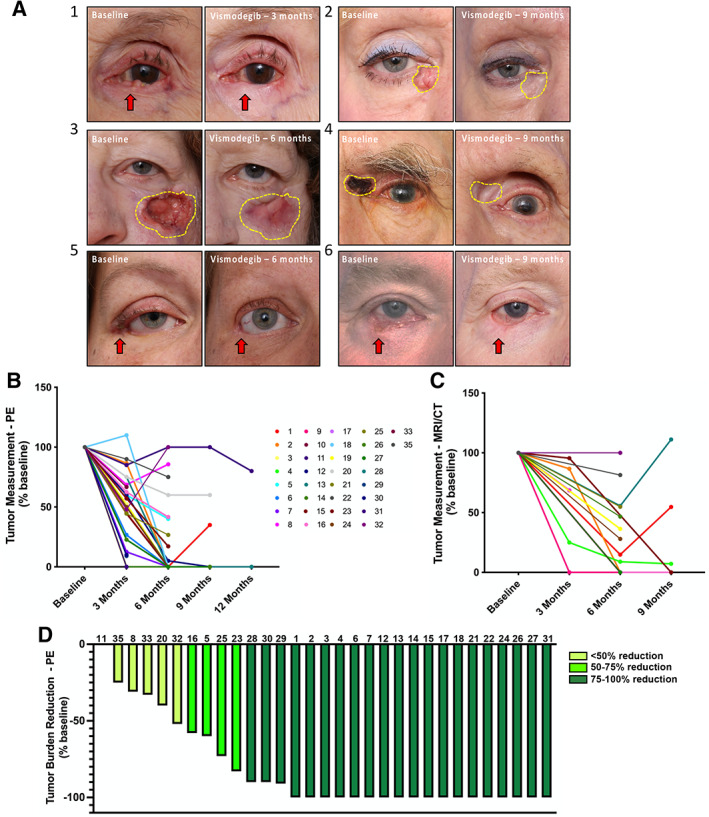Figure 3.

Tumor response to vismodegib treatment. (A‐1): Patient 30 (female, age 92) with left lower eyelid basal cell carcinoma (BCC) that obliterated her eyelid margin and canaliculus. (A‐2): Patient 25 (female, age 69) with recurrent left periocular BCC with perineural spread that invaded the orbit. (A‐3): Patient 18 (female, age 58) with long‐standing right lower eyelid BCC involving the lateral canthus, anchored to bone, with orbital extension, causing lower eyelid retraction and upper eyelid cicatricial ptosis. (A‐4): Patient 14 (female, age 65) with nodular BCC of her right medial canthus. They also had independent BCC tumors at the left medial canthus and central forehead. All three tumors responded to vismodegib therapy. (A‐5): Patient 1 (male, age 62) with BCC of the left medial canthus, with anchoring to bone. (A‐6): Patient 3 (male, age 69) with BCC of the right lower eyelid invading the anterior orbit. (B, C): PE (B) and MRI/CT (C) tumor measurement (percentage baseline) at 3, 6, 9, and 12 months after vismodegib treatment. (D): Tumor burden reduction (PE percentage baseline) at 12 months post treatment or presurgery. Abbreviations: MRI/CT, magnetic resonance imaging/computed tomography; PE, physical exam.
